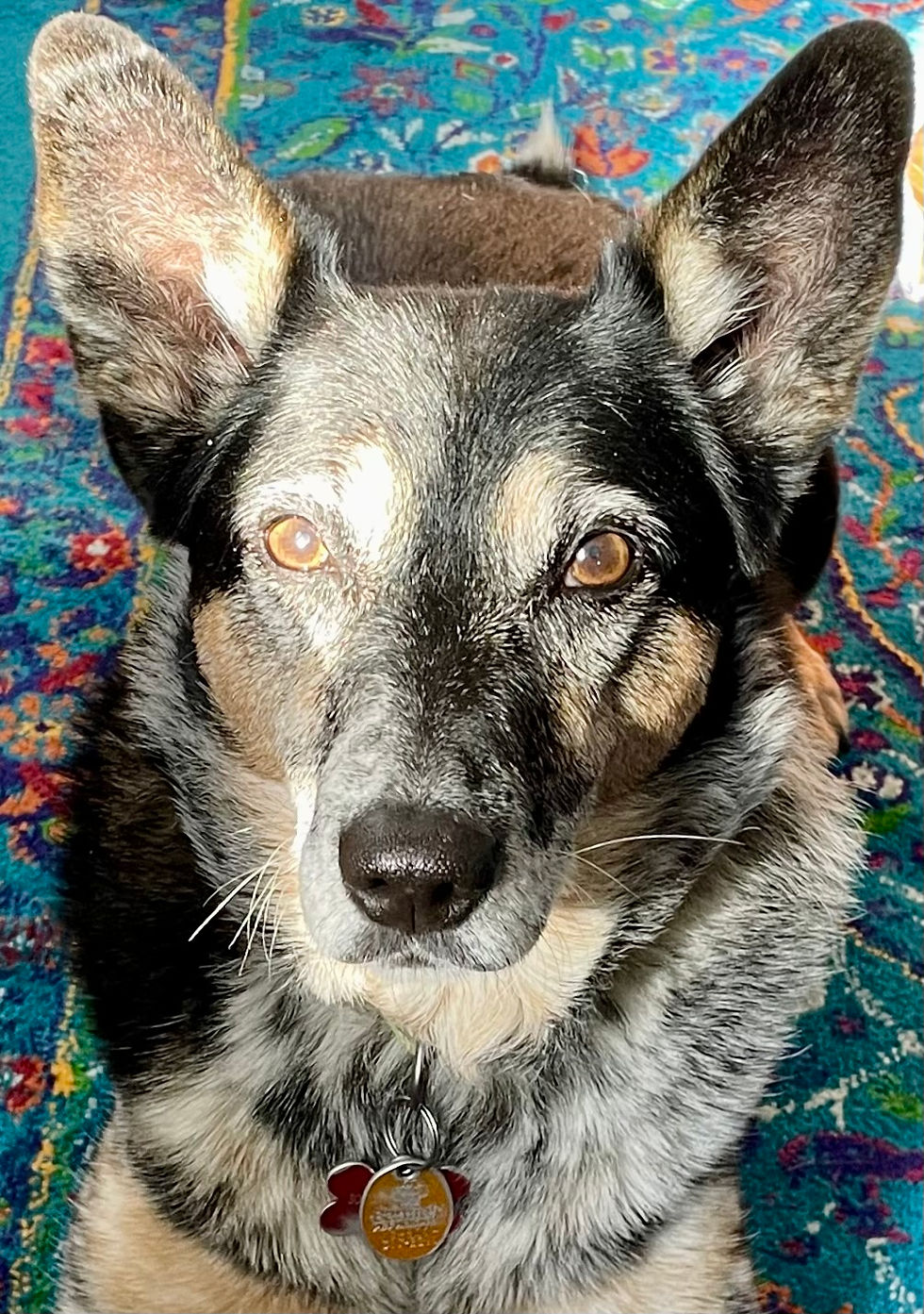It's Okay, My Dog is Friendly!
- Virginia Dare

- Jun 10, 2022
- 4 min read
Oooph, this phrase is the bane of many dog owners' and trainers' existence. I'm speaking of situations where one dog owner does not have control of their dog (it's either off leash or pulling ahead on leash and ignoring its owner), and that dog beelines its way toward another dog, approaching with speed and enthusiasm. The owner of that dog then calls out, "It's okay, my dog is friendly!"

The problem is this: my dog, or another dog out there in public, may NOT be friendly. It may be fearful of other dogs, or aggressive, or old, or in pain, or just plain uninterested. So it is not socially acceptable for the 'friendly' dog to be rushing into an unknown dog's space to say hello.
Imagine if a complete stranger dashed up to you and invaded your space, pawed at you 'affectionately,' and completely ignored your body language or verbal signals for him to back off. Is that 'friendly,' or is it incredibly daft and rude? Or worse?
Even if both owners agree their dogs are friendly and they permit a visit, tight leashes restrict natural movement and communication, they can create tension and possibly a safety risk if tangling occurs.
My general rule of thumb is that on-leash dogs
should not be visiting with each other.
There's a lot of nuanced handling and management needed to create positive greeting experiences between two dogs meeting for the first time, whether on leash or off. A good understanding of dog body language is incredibly important. And each dog's personality and socialization history also needs to be considered. (Consider working with a professional trainer if you're having issues with dog greetings and/or overly-aroused behavior in the presence of other dogs. This is usually a resolvable issue.)
I'd like to share some management tips and body language details with you, along with some interesting video footage. The video includes a long-haired chihuahua named Allie who was a guest at my house. She is a mere 5 lbs. and about a year old. My dogs are literally double or more her size, at 10 lbs. and 12 lbs. each.
Although someone may look at this trio collectively and only see tiny dogs (especially if you own a significantly bigger dog yourself), this difference in size is significant. Imagine your 45 lb. child wrestling playfully with a 90 lb. child. You'd want to be sure the 90 lb. child had excellent control of his body and a willingness to be gentle with the much smaller child. Otherwise, painful accidents can happen.
When Allie first arrived, she immediately displayed some worry and shyness around my dogs, especially Bond, who is younger and more lively than Bean. I spent the entire first day providing controlled exposures in short doses, and kept Bond on leash to better manage his friendly approaches and to ensure he was respectful of her need for space.
In this video, Allie shows many classic body language signals to express her unease:
Ears are flattened like airplane wings and pulled back
Movement is slow
Ground sniffing occurs
Tail is hanging low
Head turns occur frequently
Body leans away sometimes
At :15 sec, while Bond is scratching and otherwise occupied, Allie air scents to collect some more info about him. When he moves away, she feels safe to move forward while his back is turned.
At :54 sec, she and Bean have a friendly moment, and Allie's tail lifts and waves, her ear position moves forward, and she looks more relaxed. It's lovely to see!
This video was taken on day two of Allie's visit, and my heart sang when I saw the first play session between her and Bond. The body language is SO different from day one. Her tail is up and wagging, she play bows, her body is looser and more animated, and she's showing what I call "frisky ears." Though rotated back, the position is higher and thus quite different from the ear position of a worried/fearful dog.
Is everything perfect? Certainly not. She still feels the need to slow things down during this play bout. Notice each time she returns to the folded blanket and sits there. That sit is meaningful. She needs a pause in activity. My job is to make sure Bond doesn't continue with active play during these moments. A more socially-skilled dog, like Bean, would know to back off and give the other dog some space when it gives clear signals of needing a break. Bond is still learning some of the nuances of gracious social behavior, so I try to help him.
When you learn how to accurately read a dog's body signals, it's literally like learning a new language. What a powerful thing this is, to be able to understand what your dog is communicating. This allows us to be better guardians of our dogs, respecting their communication, and protecting them from things they consider scary or unpleasant. It also allows us to more accurately read an unknown dog's signals, so we can be considerate of their space when meeting them in public.
Bottom line, even if you have a dog that's a social butterfly, please be sensitive to the fact that not every dog welcomes the friendly advances of another dog. By being observant and respectful of the dogs' signals, we dramatically increase the chances of the dogs feeling safe and relaxed.
Virginia Dare is a certified dog trainer & behavior counselor with decades of experience. Her business offers live video consultations anywhere in the US for training and behavior help, along with pre- and post-arrival counseling for new puppies.
She also provides in-home, private lessons and behavior consultations in the northern areas of Fairfield and Westchester counties, western New Haven county, Putnam and southern Dutchess counties.
Please visit www.NorthStarCanines.com/services to learn more, or contact me at 804.784.0120



Comments